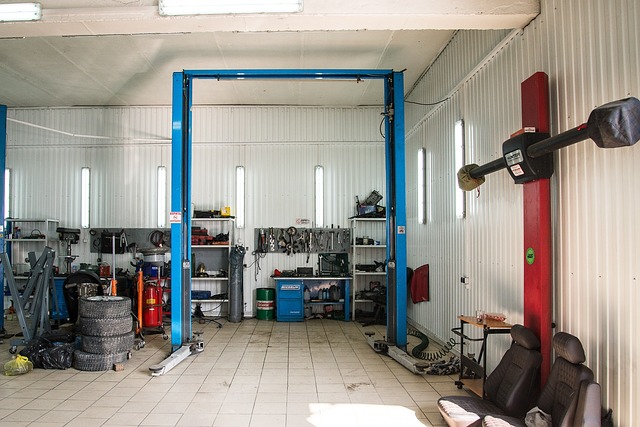In the competitive world of commercial real estate, curating a stunning landscape is key to attracting tenants and boosting property value. Strategic pruning stands out as a powerful tool in this endeavor. This article explores the art of landscape pruning, delving into its numerous benefits for commercial properties in Anderson, SC. From identifying safety hazards requiring emergency tree removal services to best practices for optimal views, we provide a comprehensive guide to enhancing your property’s aesthetics and long-term health.
- Understanding Landscape Pruning: Its Benefits for Commercial Properties
- Identifying Problematic Trees and Safety Concerns in Anderson, SC
- The Role of Professional Tree Removal Services for Emergency Situations
- Techniques and Best Practices for Effective Landscape Pruning
- Enhancing Property Aesthetics and Value through Strategic Pruning
- Long-term Maintenance: Ensuring Healthy Trees and Optimal Views
Understanding Landscape Pruning: Its Benefits for Commercial Properties
Landscape pruning is an art that involves selectively cutting and shaping trees, shrubs, and plants to enhance aesthetic appeal and functionality. For commercial properties in Anderson, SC, this practice offers numerous advantages beyond mere visual improvement. By removing dead or overgrowing branches and structuring the landscape, it not only enhances curb appeal but also ensures better visibility for buildings and structures, especially in emergency situations.
Well-maintained landscapes with strategic pruning can play a crucial role in commercial property management. It aids in preventing obstruction of entryways, exit routes, and emergency vehicle access. Promptly addressing safety concerns through efficient tree removal and pruning services is vital, particularly in densely populated urban areas like Anderson. This proactive approach not only safeguards occupants and visitors but also aligns with local safety regulations, ensuring that commercial spaces remain functional and accessible when it matters most.
Identifying Problematic Trees and Safety Concerns in Anderson, SC
In Anderson, SC, identifying problematic trees is a crucial step in landscape pruning for improved commercial property views. Trees that pose safety risks, such as those with dead branches, unstable roots, or diseased leaves, can not only obstruct scenic vistas but also present significant hazards. Commercial emergency tree removal services are often necessary to address these concerns promptly and safely. Property managers and business owners should regularly inspect their landscapes to detect any trees requiring immediate attention, especially in high-traffic areas where the risk of damage or injury is heightened.
Safety should always be the top priority when dealing with large trees near commercial properties. Unstable trees can fall during storms or strong winds, causing property damage or injuring individuals. Anderson, SC, professionals specializing in commercial emergency tree removal for safety are equipped with the necessary tools and expertise to assess and mitigate these risks effectively. Prompt action not only enhances the aesthetic appeal of the property but also ensures a secure environment for employees, customers, and nearby residents.
The Role of Professional Tree Removal Services for Emergency Situations
In emergency situations, prompt and professional action is crucial for maintaining safety on commercial properties. When trees pose an immediate threat due to weather damage or disease, efficient commercial emergency tree removal services in Anderson, SC, become indispensable. Timely intervention by specialists equipped with the right tools and knowledge can prevent potential hazards such as falling branches or structural damage to buildings and other structures.
Anderson SC-based professional tree removal services offer a range of benefits beyond urgent situations. They possess the expertise and resources needed to handle complex tasks like removing large, mature trees safely and efficiently while minimizing disruption to business operations. Their professionals are trained to assess risks accurately and provide expert advice tailored to each property’s unique needs, ensuring optimal tree management for both aesthetics and safety.
Techniques and Best Practices for Effective Landscape Pruning
Pruning is a vital technique in shaping and enhancing outdoor spaces, particularly for commercial properties. When it comes to landscape pruning, professionals use various methods to achieve desired results while ensuring safety. One of the primary goals is to remove dead or diseased branches, fostering healthier tree growth and improving overall aesthetics.
Best practices involve identifying the appropriate time to prune, as different plant species have distinct needs. For example, late winter or early spring is often ideal for many deciduous trees. Additionally, using the right tools is essential; shears, saws, and pruners should be chosen based on branch thickness to make clean cuts and prevent damage. Safety is paramount, especially with commercial emergency tree removal in Anderson SC, where large trees and complex structures demand skilled professionals to mitigate risks associated with heights and heavy branches.
Enhancing Property Aesthetics and Value through Strategic Pruning
Long-term Maintenance: Ensuring Healthy Trees and Optimal Views
Regular maintenance is key to preserving the health of trees and maintaining optimal views in commercial settings. Pruning should be an ongoing process, as it promotes healthy growth, prevents disease, and ensures the tree remains structurally sound. By scheduling routine appointments with arborists, property managers can catch potential issues early on, avoiding costly emergency situations like those requiring commercial emergency tree removal in Anderson, SC.
This proactive approach is especially crucial for large-scale properties where trees play a significant role in the overall aesthetic appeal and value. Proper pruning not only keeps trees healthy but also enhances their ability to withstand environmental challenges, ensuring they remain vibrant and scenic features of the landscape.
